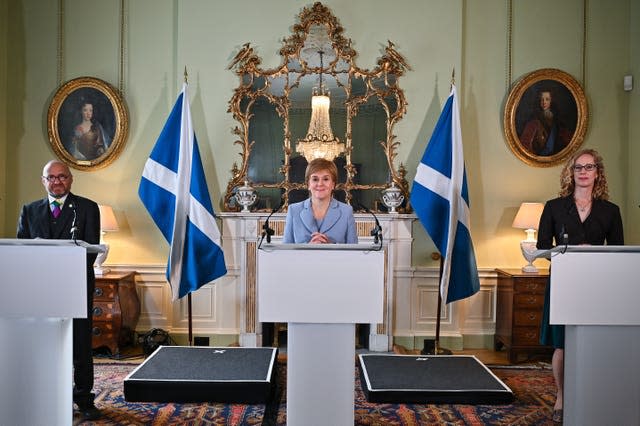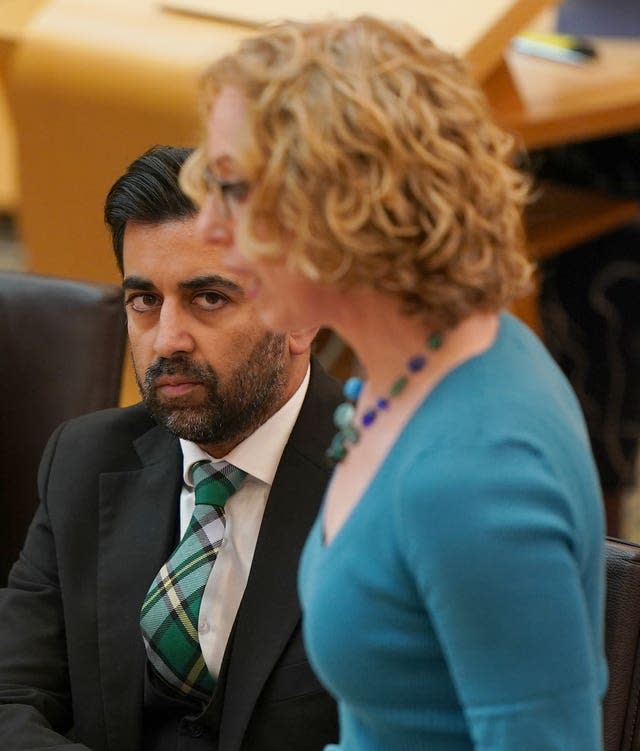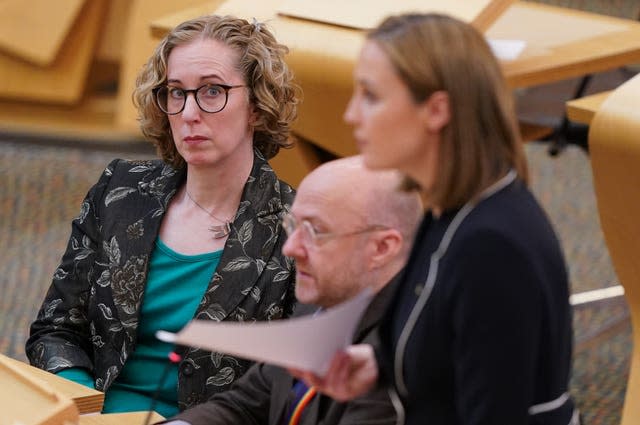Key questions on Bute House Agreement as Greens prepare to vote on its future
The future of the Bute House Agreement appears to be in question as Scottish Green Party members prepare to vote on whether it should continue.
The powersharing deal with the SNP brought Green ministers into government for the first time in the UK.
Here are some of the key questions about the agreement and what could happen next:
– How was the Bute House Agreement formed?
After the May 2021 Scottish Parliament elections, Nicola Sturgeon’s SNP emerged as the largest party but without an overall majority.

The Scottish Greens won their best-ever result with eight MSPs, enough to give the two pro-independence parties a working majority at Holyrood.
Negotiations began soon after the election and the deal cleared its final hurdle at the end of August 2021 when Green members voted yes to it – with 1,169 members (83%) backing the deal, 234 voting against and nine abstaining.
The Bute House Agreement takes its name from the First Minister’s official residence in Edinburgh, where the draft deal was signed.
Ms Sturgeon said the deal was a “historic” moment and the two Green leaders were “tough” negotiators.
– What did the two parties agree to do?
Scottish Green co-leaders Patrick Harvie and Lorna Slater both entered government as ministers – between them their portfolios include tenants’ rights, the heat in buildings strategy, the circular economy and biodiversity.
Alongside the text of the Bute House Agreement, which sets out the expectations for each party, a shared policy programme for their time in government was published.

This contained a number of environmental policies, a commitment to implement rent controls and a “fair fares review” for public transport.
However, the Bute House Agreement also set out ten areas where the two parties could continue to disagree.
These included aviation policy, green freeports, the defence sector and economic principles related to concepts of sustainable growth.
– What if one side wants to end the deal?
The deal is meant to last for the current session of the Scottish Parliament and can be ended earlier by either the First Minister or the Green co-leaders writing to the other party.
However, the leaderships of both parties are in favour of seeing the deal through to the next election.
– Why are some in the SNP unhappy about the agreement?
Humza Yousaf won the SNP leadership contest to succeed Nicola Sturgeon in March 2023 with a strong commitment to continue the Bute House Agreement.
The strength of feeling from @scottishgreens members this week has been very clear. Several issues have come to a head together, but most clearly the need for a reset of climate policy, following @theCCCuk advice on the 2030 target.
— Patrick Harvie 🇪🇺🌈 (@patrickharvie) April 19, 2024
Some in the party, though, blame the Greens for unpopular policies which are dragging down the public’s perception of the Scottish Government and want to see the agreement reviewed or scrapped.
There has been particular friction over issues like gender reforms, the deposit return scheme (DRS) and highly protected marine areas (HPMAs).
Critics include former leadership contender Kate Forbes, ex-ministers Fergus Ewing and Alex Neil, MP Joanna Cherry and MSP Michelle Thomson.
– Why are some in the Scottish Greens unhappy with the agreement?
Two things took place last Thursday which stoked anger among the Greens’ grassroots supporters.
In the wake of the Cass Review, the prescription of new puberty blockers was paused at Scotland’s only gender clinic for young people.
The Rainbow Greens, the party’s LGBT wing, said this was a “betrayal” of trans youngsters and launched a petition on the future of the Bute House Agreement.
The alert reader will know I was never a fan of Bute House Agreement. But I accepted the democratic vote of party members.
However, given today's announcement, I'm forced to conclude our party is being used as a figleaf for the SNP's woeful & inexcusable climate inaction.
6/7
— Chas Booth 🇪🇺🇺🇦 (@CllrChasBooth) April 18, 2024
The Scottish Government also scrapped its 2030 target for reducing reducing emissions by 75%, with the SNP’s Net Zero Secretary Mairi McAllan conceding the goal is “out of reach”.
Green councillor Chas Booth said he was “never a fan” of the Bute House Agreement and his party is “being used as a figleaf for the SNP’s woeful & inexcusable climate inaction”.
An online meeting was held on Thursday evening and co-leader Mr Harvie acknowledged the “strength of feeling” among his party’s members.
Late on Friday, the party confirmed an extraordinary general meeting (EGM) would be held in the coming weeks where the Bute House Agreement would be discussed.
– What are the arguments in favour of keeping the Bute House Agreement?
Humza Yousaf has pointed out the Greens give the Scottish Government a pro-independence majority at Holyrood.
The SNP leadership also say the Bute House Agreement provides an example of a mature alternative to the adversarial nature of party politics around the UK.

The Scottish Greens co-leaders have sought to rally their supporters behind the deal, saying having Greens “in the room” has accelerated action on the climate crisis.
They point to policies including the expansion of free bus travel to young people, investment in public transport, long-term rent controls and scrapping peak time rail fares.
Leaving government would embolden their opponents at Holyrood and slow down action on climate change, they argue.
– What could happen next?
With the EGM taking place in late May, debate over the Bute House Agreement will continue.
Mr Harvie has said he does not know if the agreement will continue beyond this point as it will be up to Green members.
If the agreement is voted down, it is understood the SNP would continue to govern as a minority.
